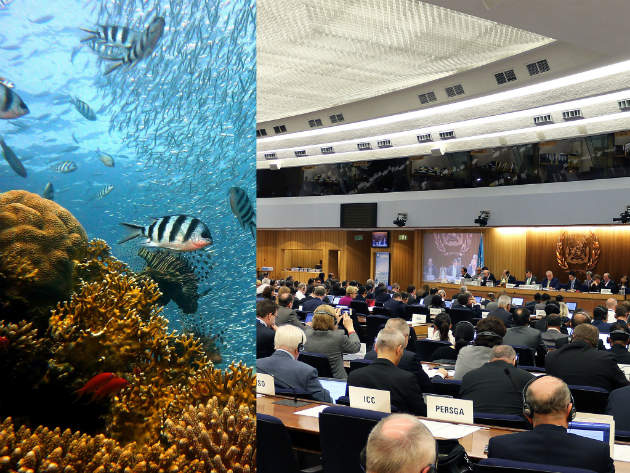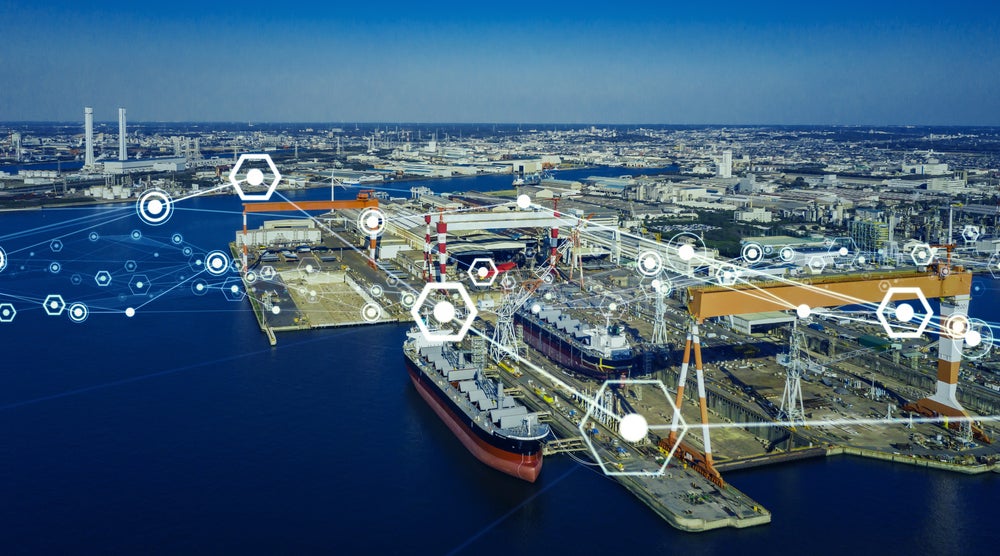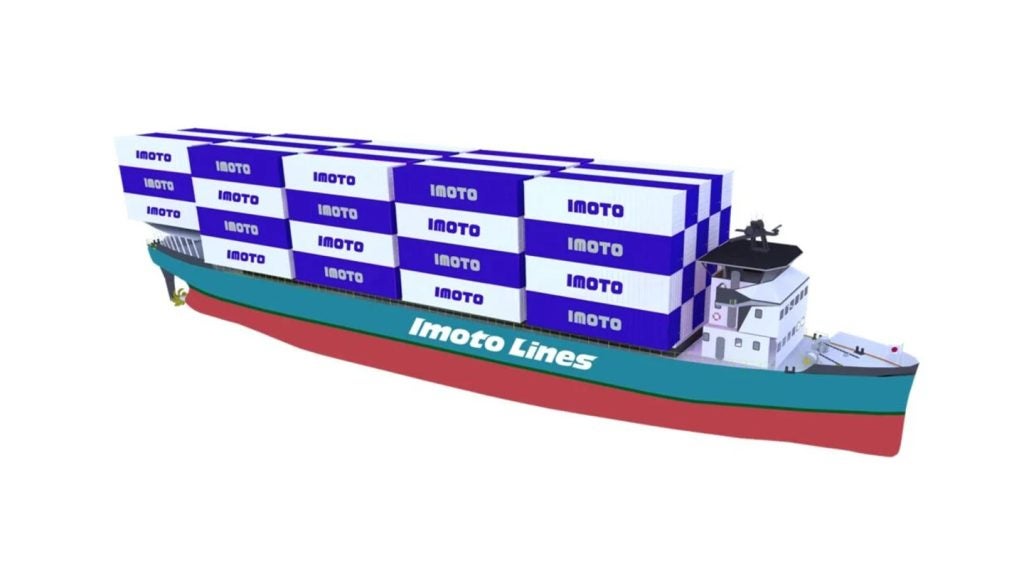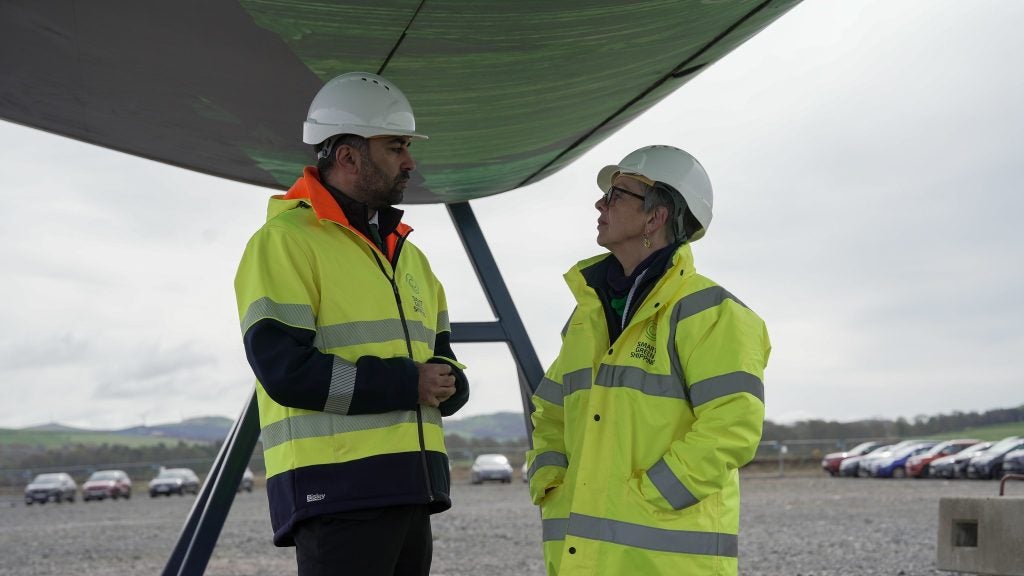
After being side-lined during the COP21 climate talks in Paris last year, pressure was mounting on the International Maritime Organization (IMO) to take clear action on the shipping sector’s dangerous emissions.
Shipping contributes for approximately 2.4% of the total carbon dioxide released in the world, and has until now largely gone unregulated.
The 70th session of the Marine Environment Protection Committee (MEPC 70), which took place on 24-28 October at IMO’s headquarters in London, brought together 800 delegates from 100 IMO member states, as well as representatives from three UN agencies, five intergovernmental organisations and 49 non-governmental organisations.
The parties deliberated on key emission reduction areas, such as the collection of fuel consumption data from the global fleet, the long-term reduction of greenhouse gases from shipping and revised guidelines for approval of ballast water management systems.
IMO’s landmark rulings came just days before the ratification of the COP21 climate accord reached in Paris last December, and preceded the start of the COP22 conference in Marrakech, Morocco.
“I am very much encouraged to see the spirit of the Paris Agreement alive here at IMO, with Member States showing their willingness to work collaboratively for the greater good,” said IMO secretary general Kitack Lim in his opening address. “The broader challenge we all face is how to ensure future growth can be achieved sustainably; how to ensure that globalization becomes a positive force for all the world’s people, and not for just a privileged few.”
How well do you really know your competitors?
Access the most comprehensive Company Profiles on the market, powered by GlobalData. Save hours of research. Gain competitive edge.

Thank you!
Your download email will arrive shortly
Not ready to buy yet? Download a free sample
We are confident about the unique quality of our Company Profiles. However, we want you to make the most beneficial decision for your business, so we offer a free sample that you can download by submitting the below form
By GlobalDataImplementing a global sulphur cap in 2020
One of the most important outcomes of the MEPC 70 conference was the Committee’s decision to set 1 January 2020 as the implementation date for a reduction in the sulphur content of the fuel oil used by ships.
The ruling, described by the IMO as “a landmark decision for both the environment and human health”, will implement a global sulphur cap of 0.50% m/m (mass/mass), down from the 3.5% m/m global limit currently in place.
The date of 2020 was previously agreed in amendments adopted in 2008, but the final resolution hinged on the results of a fuel availability review, which was tasked to assess whether sufficient compliant fuel oil would be available on the market before 2020. If not, the date would have been postponed to 2025.
The findings of a study carried out by CE Delft, completed this year and presented to the MEPC on 24 October, found no predicted shortages of compliant fuel oil.
The decision was applauded by environmental groups Transport & Environment and Seas At Risk, members of the Clean Shipping Coalition.
“This will reduce SO2 emissions – which cause premature deaths from diseases such as lung cancer and heart disease – from shipping by 85% compared with today’s levels,” the NGOs said in a statement.
Ships will be able to meet the new requirement by using low-sulphur compliant fuel oil, such as liquefied natural gas (LNG) or methanol, or by fitting exhaust gas cleaning systems or “scrubbers”, which strip the pollutants from the emissions before they are released into the atmosphere.
“The reductions in sulphur oxide emissions resulting from the lower global sulphur cap are expected to have a significant beneficial impact on the environment and on human health, particularly that of people living in port cities and coastal communities, beyond the existing emission control areas,” Lim said.
Roadmap for reducing greenhouse gas emissions
The Committee also approved a roadmap for developing a comprehensive IMO strategy on the reduction of greenhouse gas (GHG) emissions from ships.
Under the roadmap, which will run from 2017 through to 2023, MEPC is tasked with addressing the role of the international shipping sector in supporting the goals of the Paris Agreement. The Paris climate change deal aims to curb emissions to levels that would prevent the world temperature from rising more than 2 degrees Celsius.
The plan will include a list of activities, such as further GHG studies to be carried out by the IMO and significant intersessional work on GHG reductions. In practical terms, MEPC will decide whether “technical and operational measures alone” are sufficient to meet IMO’s carbon dioxide (CO2) reduction commitments.
So far, the shipping sector reduced its total CO2 emissions by more than 10% between 2007 and 2012; by 2025 all new ships will be 30% more energy efficient than those built in 2014.
Peter Hinchliffe, secretary general of the International Chamber of Shipping (ICS), applauded the adoption of the roadmap, stressing that “the final stage of the ‘road map’ to be enacted by 2023 should establish a global mechanism for ensuring that these IMO CO2 reduction commitments will actually be delivered.”
Mandatory data collection system for fuel oil consumption
A key step of the GHG reduction roadmap is the adoption of the mandatory MARPOL Annex VI, which will require ships to record and report their fuel oil consumption.
The amendment applies to ships of 5,000 gross tonnage and above, who will have to collect consumption data from each type of fuel oil they use. The ships in question account for 85% of CO2 emissions from international shipping.
The collected data will then be reported to the flag state at the end of each calendar year, in return for a Statement of Compliance, given that the ship passes the requirements.
Furthermore, flag states will report into the IMO’s Ship Fuel Oil Consumption Database, which will serve the basis for “an objective, transparent and inclusive policy debate in the MEPC”. All data collected would be anonymised so individual ship data would not be recognised, the IMO specifies. The mandatory requirements are bound to enter into force on 1 March 2018.
New protected territories
MEPC also ruled in favour of designating the North Sea and Baltic Sea as emission control areas (ECAs) for nitrogen oxides (NOx).
ECAs are sea areas in which strict limits of airborne emissions from ships engines apply.
The ruling means that, starting from January 2021, marine diesel engines travelling through the North Sea and Baltic Sea will have to comply with the Tier III NOx emission limit.
The decision came after a study commissioned by Dutch environmental assessment agency PBL found that the benefits of setting up a NOx emission control area in the North Sea would outweigh costs by almost seven times. Both areas are already designated ECAs for sulphur oxide (SOx) emissions.
In a similar move, a busy shipping route through the Louisiade Archipelago in Papua New Guinea was designated a Particularly Sensitive Sea Area (PSSA) in recognition of its ecological worth. The area is home to a variety of marine species and coral reefs, and in 2011 nine new species of snails were discovered in the Archipelago.
After an impassionate appeal from Papua’s delegation, the IMO decreed that the region surrounding the Jomard Entrance will enjoy special protection from damaging maritime activities, such as strict routing systems.
The Jomard Entrance joins a list of areas of outstanding beauty and great environmental significance protected as PSSAs, such as the Great Barrier Reef in Australia, the Canary Islands in Spain and Malpelo Island in Colombia.
Revised guidelines for ballast water management
An equally celebrated decision was the Committee’s move to adopt a set of revised guidelines for ballast water management systems (BWMS).
The new guidelines, due to enter into force in September 2017, will update approval procedures for BWMS, as well as imposing more robust performance specifications, and better reporting and monitoring equipment.
Any BWMS installed on ships on or after October 2020 will have to subscribe to the new guidelines.
In his closing remarks at MEPC 70, Kitack Lim praised the move saying that “the adoption of the revised Guidelines for the approval of ballast water management systems will no doubt boost the confidence on the robustness and reliability of the treatment technologies.”
An uncertain tomorrow
Despite their progressive nature, the new set of measures will take time to make a visible difference to the sector’s footprint, and unfortunately they still leave the shipping industry in a state of transition and uncertainty.
Shipping is bound to experience considerable growth in the coming years, with intra-regional trade nearly doubling by 2030 and an overall increase in tonnage and vessel numbers for all major ship types, according to QinetiQ and Lloyd’s Register.
MEPC 70 indeed took a big leap forward for sustainability, reiterating an industry-wide willingness to do better, sooner. However, a much needed transition to green operations will not be a battle won overnight.
Galen Hon, shipping operation manager for global non-profit Carbon War Room, described the week’s efforts as “hugely promising”, but retained a degree of scepticism. “The outcome was that we have no guarantee of seeing a clear target or decarbonisation pathway until 2018 at the earliest – nor [of] seeing a single ton of carbon reduced until after 2023,” he said.
“By this timeline, shipping’s emissions will have had a further decade of unrestricted growth since the IMO’s GHG Emissions Report 2014, and will require much more drastic measures to align with a 2-degree pathway.”






